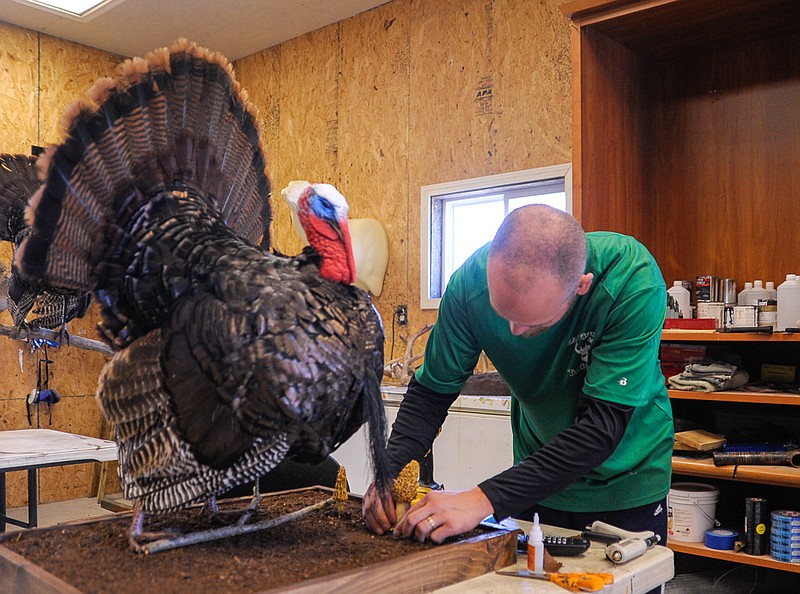CALIFORNIA, Mo. -- When walking into Oak Grove Taxidermy and Hydrodripping, the first things to be noticed are shiny, colorful small animal skulls.
Then, look up. Many Missouri mammals, like a skunk, raccoon and fox, are looking back from their posed, life-like stations.
However, look to the left, and next comes either fascination or disgust.
The floor of a nearly coffin-sized, see-through box wriggles. Look closer, several animal skulls in some stage of decomposition are equally covered in motion.
Flesh-eating beetles more efficiently and thoroughly clean the bones than the more common method of boiling and scraping, which prepares a specimen for hydrodipping, explained taxidermist Andrew Kiesling.
Hydrodipping creates the European mount. It's water transfer printing, putting clear or high-definition patterns onto three-dimensional surfaces.
Initially, the method allowed hunters a lower-cost option to display their animal trophies.
The method also can be used for decorative bottles, mailboxes, helmets and guns. Hydrodipped car rims have proven the most popular so far, Kiesling said.
"It's been pretty popular," he said. "It's pretty neat."
However, hydrodipping is more frustrating than the taxidermy, Kiesling admitted.
Many area taxidermists don't do hydrodipping. Among those who do, Kiesling is the only one who uses the flesh-eating beetles, he said.
"I get a lot of work from other taxidermists," Kiesling said. "I enjoy it more than the taxidermy."
He has had the beetles about eight months. And already he has visitors stop in, just to see the beetles.
Kiesling took the five-month Missouri Taxidermy Institute class after losing his job when RR Donnelley closed several years ago.
"I'm an outdoors guy," he said. "I love to deer hunt."
He remembers the deer he got and had mounted was an eight-pointer about 15 years ago, which hangs in his house as decoration.
"When I hunt, if I kill it, I mount it," Kiesling said. "I look at it as respect to the animals."
These days, however, he has little chance to hunt, though he sets aside time to go with his daughter during youth season, he said.
"I'd rather do this than kill my own," he said.
His personal experience - seeing these wild animals out in their natural habitats and observing their body movements - helps with the taxidermy side.
"You want to make the stuff look good, make them look natural," Kiesling said.
Last year alone, Kiesling mounted 42 deer shoulders and 15 full turkeys.
"I'd rather work with feathers," he said. "Turkeys are my favorite to do. They can look terrible when you're mounting them; then they look great when you're finished."
Red foxes have also been popular.
He has also done several bobcats killed during gun season, but he only takes them if they've been tagged by an agent.
Kiesling does few fish or ducks, due to the strict federal regulations.
Agents have come to his workshop to collect illegally-gained carcasses. However, they understand Kiesling and other taxidermists haven't done anything wrong.
"We don't know if they've been taken legally or illegally," Kiesling said about customers bringing in their kill. "We hope they're legally taken."
His more unusual projects have been a shoulder mount of a bear, a few antelope and an Eastern-spotted skunk.
"The best thing about doing this is listening to the customers' stories," Kiesling said.
Link:

